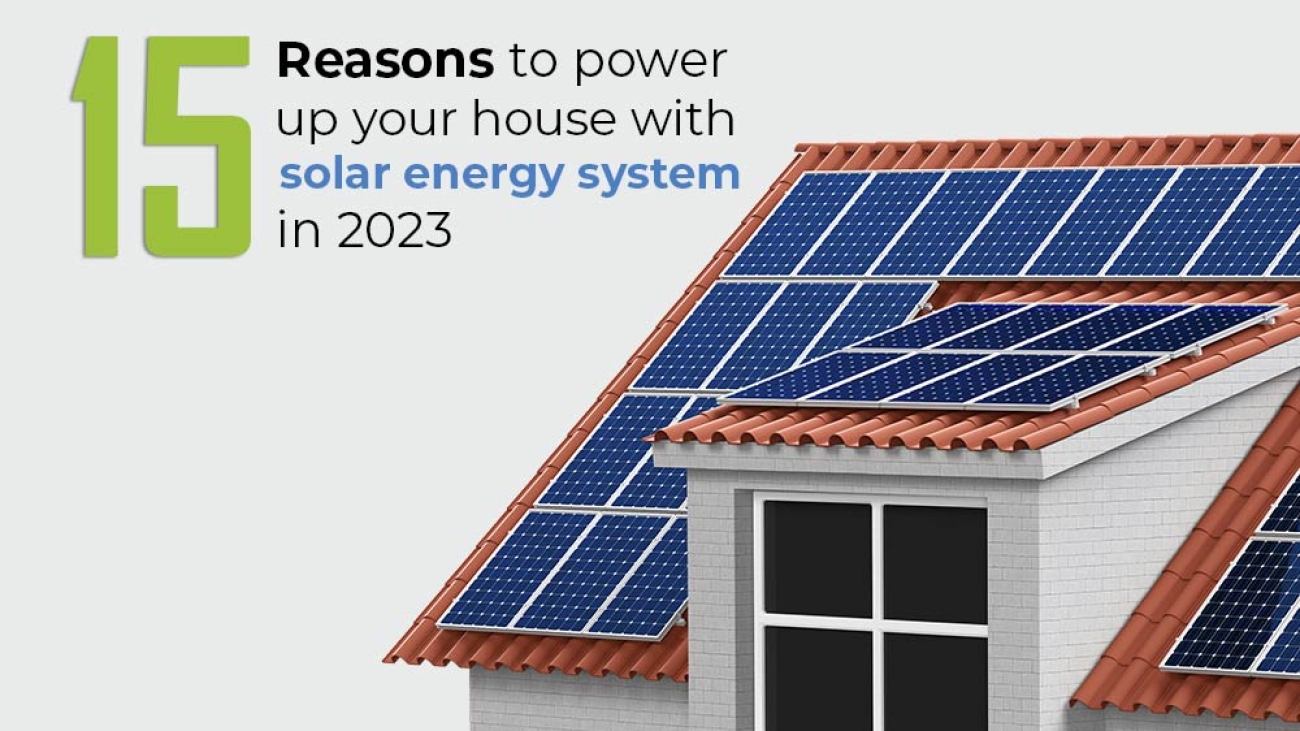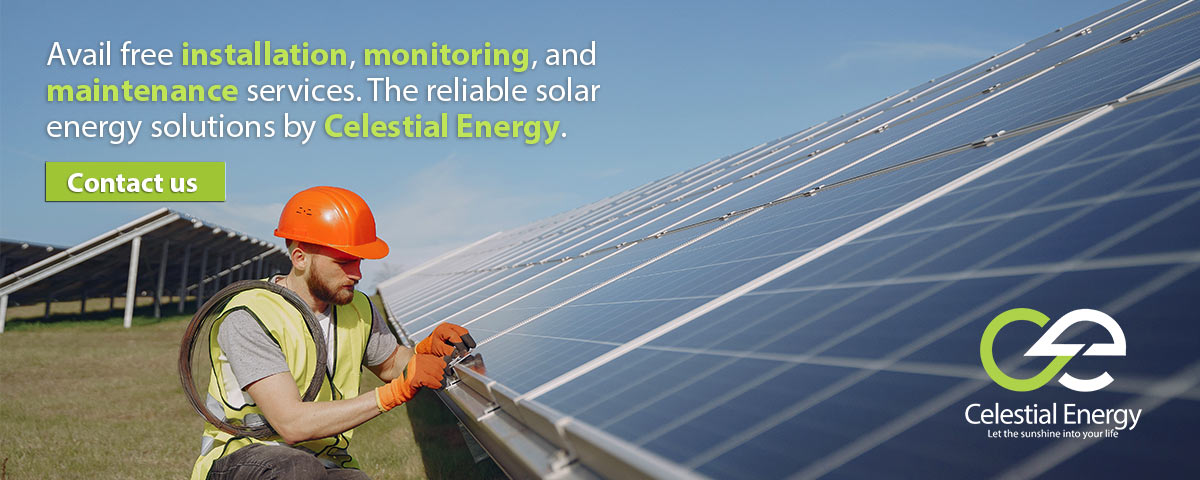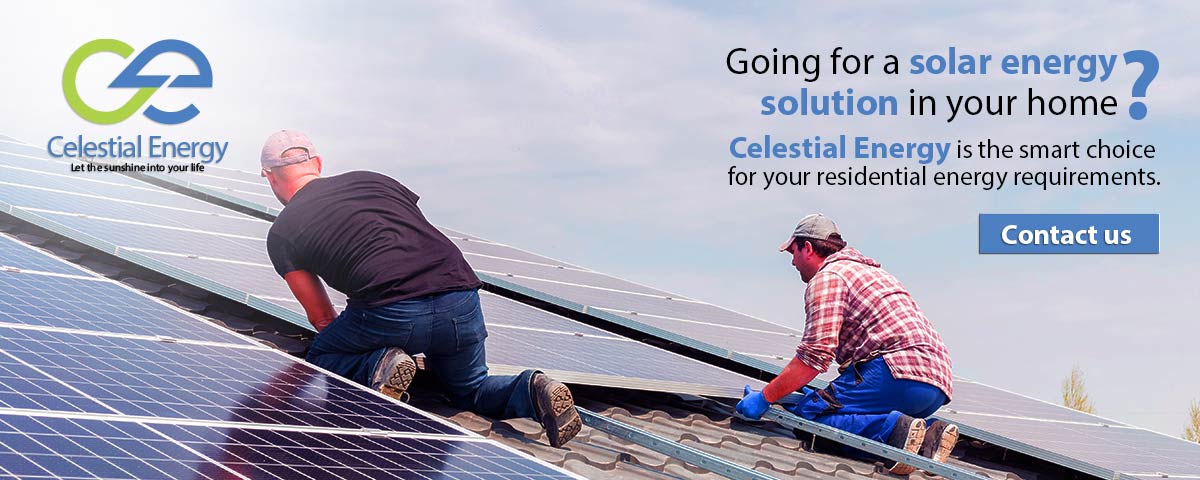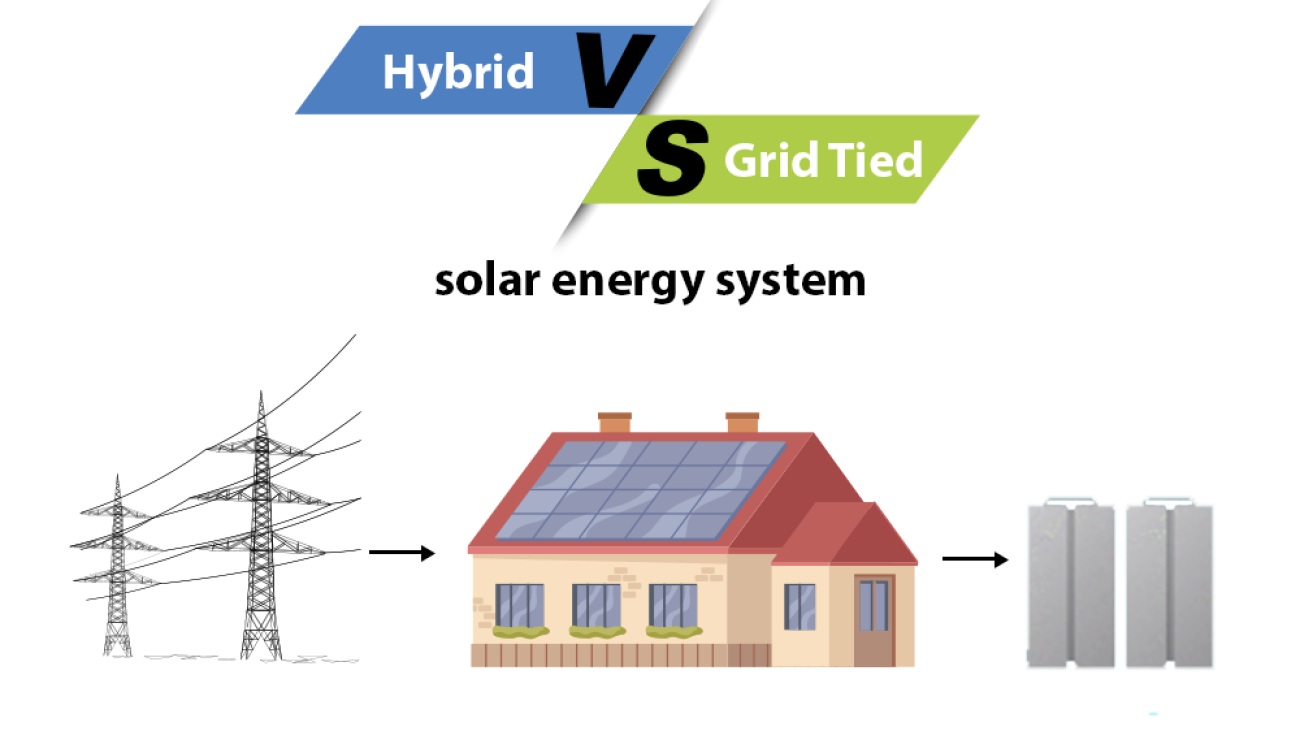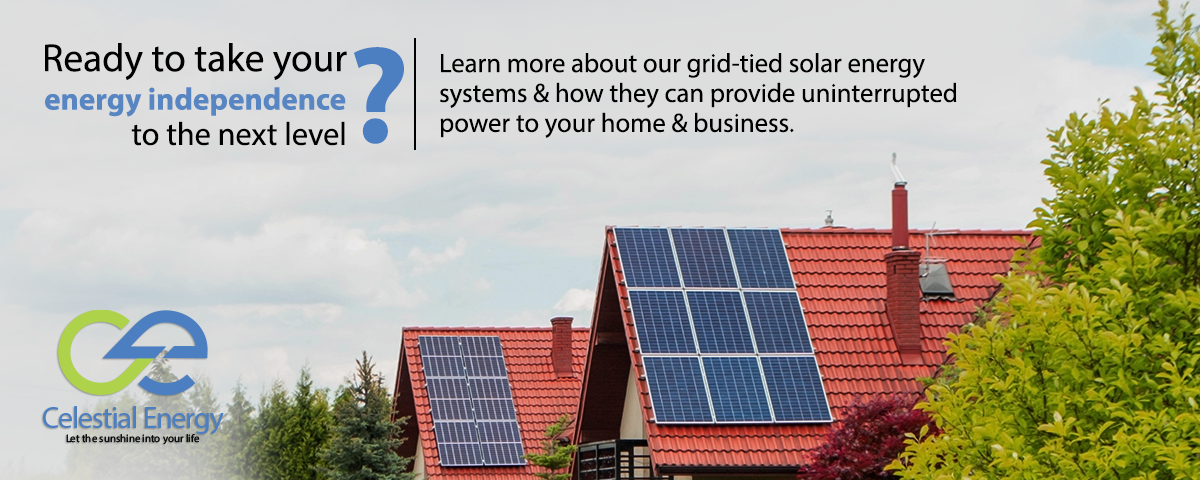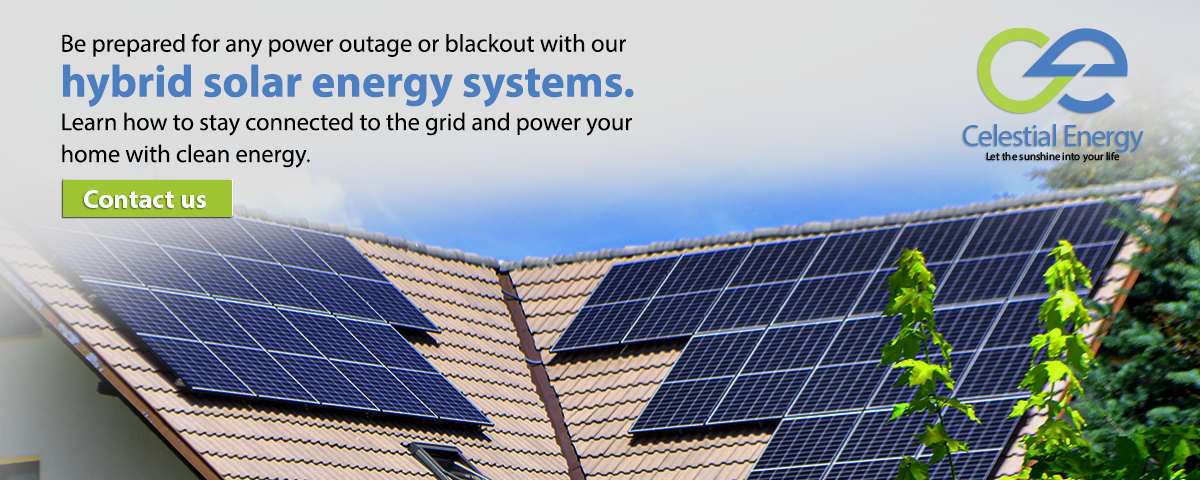The electricity tariff in Pakistan is among the highest in the world, and the ever-rising inflation has made it worse for every homeowner. According to the data from a government survey, a noticeable percentage of rural households in the country are utilizing the solar system for the home compared to urban households. Specifically, 20% of rural households use solar panels, while only 7.7% of urban households have adopted this alternative energy source. Solar energy has become a popular and efficient source of electricity generation in Pakistan due to its financial and environmental benefits.
As a homeowner, utilizing solar power contributes to a cleaner future and helps reduce the production of harmful pollutants. Incorporating solar power into your home can provide advantages for your wallet and the environment. Using sustainable energy sources can positively impact the planet while enjoying financial benefits.
By investing in solar energy solutions, consumers can reduce reliance on traditional grid electricity and contribute to a cleaner and more sustainable future for Pakistan. The high cost of electricity and reliance on fossil fuels for energy generation are serious challenges.
In this blog, you will learn how solar systems for your home can benefit you.
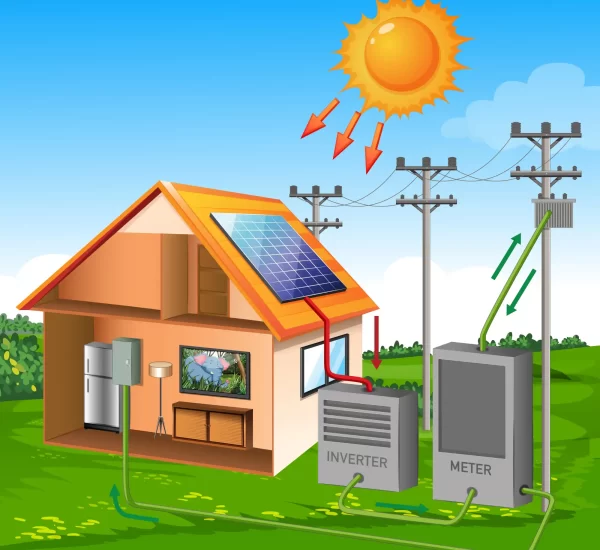
Your Free Electricity Supplier
Imagine having an electricity supplier that doesn’t charge you a penny. It may seem unbelievable, but that’s what you get with the sun and an electricity supplier that harnesses the power of the sun to provide free electricity. The primary advantage of solar solutions for homeowners, businesses, and industries is obtaining electricity at zero cost. By installing an adequate system of solar panels, electricity bills can be reduced to zero, providing free electricity for at least 20 to 25 years.
This compelling financial benefit of solar power cannot be overstated, as it allows consumers to save money while contributing to a more sustainable future. In addition, adopting solar power reduces reliance on non-renewable energy sources, which helps to decrease carbon emissions and combat climate change. Individuals can enjoy free electricity by utilizing solar power, which is crucial in creating a cleaner, more sustainable world.
Lowered Cost of Solar Energy Solutions
The cost of electricity production by solar systems has notably decreased over the years. The cost has dropped by an astounding 99% since 1977, marking the most crucial price drop in any industry when most things are becoming more expensive. This is an opportune moment for anyone in Pakistan to invest in a solar system, as the global price decrease has made purchasing solar panels more accessible.
By investing in a full solar system for your home, you can access a reliable and affordable source of electricity production. This is especially beneficial considering the recent electricity price increase, which has risen exponentially in the past few years. With a solar system, homeowners, businesses, and industries can enjoy more cost savings on electricity bills while contributing to a more sustainable future.
Net Metering
Net Metering is a notable advantage of grid-tied and hybrid solar solutions. It adds to the many benefits of solar power, including environmental conservation and reduced energy bills. Net Metering has become a reality in Pakistan and is accessible to consumers from all walks of life. This mechanism allows solar users to exchange excess electricity generated by their solar panels with credit units that can be used during off-peak hours.
With Net Metering, homeowners, businesses, and industries can maximize their energy savings by using the excess electricity they generate to offset their electricity bills. This is particularly beneficial during peak hours when electricity rates are at their highest. By exchanging excess electricity for credit units, solar users can make solar power an even more financially attractive option.
Ideal Payback Period
In the past, the payback period for solar investments was typically much longer, often taking 10-20 years or more to recoup the initial investment. However, the ideal payback period for solar investments has significantly decreased due to decreasing prices and increasing benefits such as Net Metering and more efficient solar panel systems.
Today, the payback period for a solar system is typically just 3-5 years, making it a much more attractive investment for homeowners. This represents an impressive improvement over past payback periods and highlights solar power’s increasing affordability and viability as a household renewable energy source.
The wind and solar power systems for homes, in operation after the payback period, can be considered a final golden period for consumers. They can reap the benefits of a clean and sustainable source of energy while continuing to save on their electricity bills. This is especially valuable for those living in areas with high electricity tariffs, such as Pakistan, where solar power can provide a viable alternative to traditional grid electricity.
Improved Property Resale Value
Solar panel systems for homes in Pakistan are now considered valuable assets in the real estate market. Sellers who have installed solar panels in their properties have reported a noteworthy increase in the resale value of their homes. This is because buyers are more likely to choose a property with a solar system in place, as it saves them from the hassle and expense of installing one themselves.
Solar energy’s cost savings and environmental benefits are attractive selling points for potential buyers. Hence, installing solar panels provides long-term cost savings and increases the property’s overall market value.
Protection Against Rising Prices
In an economy where inflation is a constant threat, protecting oneself from rising prices is crucial. One of the most effective ways to do this is by investing in assets that can hedge against inflation. In recent years, the cost of electricity in Pakistan has skyrocketed, making it increasingly challenging for consumers to manage their energy bills. However, the cost of solar panels in Pakistan has decreased remarkably, making solar energy solutions an affordable and attractive alternative to traditional grid electricity.
Moreover, the continued use of fossil fuels for electricity generation contributes to the rising cost of electricity, as these finite resources become scarce and difficult to extract. As a result, switching to solar energy is not only a cost-effective solution but also a sustainable one that can provide immunity against rising electricity prices in Pakistan.
Roof-Friendly
Solar panels provide a reliable energy source and offer additional benefits that can enhance the overall value of a property. One of the most important advantages of solar panel installation is the protection they provide against harsh weather conditions.
The panels act as a protective shield, shielding the roof from rain, snow, debris, and other environmental factors, which can considerably extend the life of your roof. This benefit alone can save you considerable maintenance and repair costs over time.
Solar systems for homes also help to regulate the temperature inside your home during summer. Solar panels absorb most of the sunlight instead of the roof, which prevents heat from being trapped inside the house. This efficient temperature management can help keep the house cool, reducing the need for air conditioning.
Energy Independence
A solar energy system for your home provides energy independence to homeowners, businesses, and communities by offering a reliable and renewable source of electricity. This free power source is not subject to the unpredictability and volatility of the energy market. Solar panels can generate electricity even on cloudy days, and excess energy produced can be stored in a solar battery backup system for home use when the sun isn’t shining. This means that homes and businesses can operate independently of the grid, reducing reliance on traditional energy sources and minimizing the risk of blackouts or power outages.
Additionally, solar energy systems can be tailored to meet the specific energy needs of each property, which means that homeowners and businesses can have greater control over their energy consumption and costs. By investing in a solar energy system, you can take control of your energy future, reduce your carbon footprint, and create a cleaner and more sustainable future.
Ideal Environment Condition
Pakistan is an ideal location for solar energy as major areas experience high temperatures and have ample sunlight exposure for extended periods. Solar energy has the potential to be an alternative source of energy for economic prosperity. This abundant resource provides a sustainable solution for generating electricity without harming the environment. Solar power contributes to reducing greenhouse gas effects and carbon emissions, mitigating climate change’s impact, and protecting the environment.
Renewable Energy for a Sustainable Environment
Solar energy has emerged as an affordable and highly sought-after renewable energy source that has gained immense popularity due to its numerous benefits. Among its many advantages, the most notable is its positive environmental impact. Solar energy utilization can considerably reduce reliance on fossil fuels, which are the leading contributors to air pollution. Moreover, solar energy systems aid in reducing carbon emissions, thus decreasing carbon footprints and contributing to the fight against global warming.
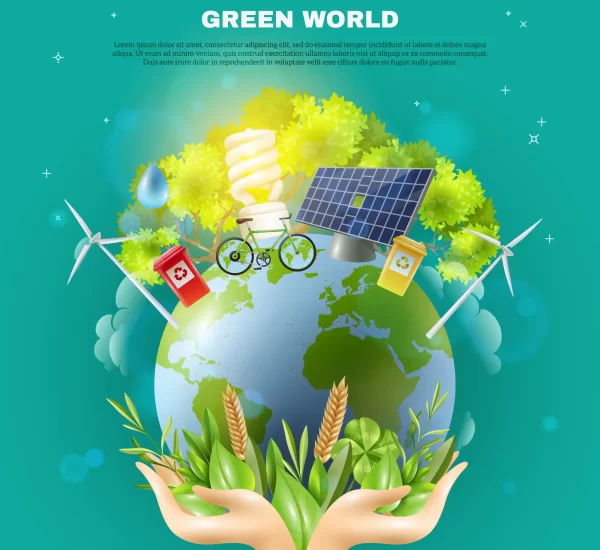
Greater Economic Benefits
By promoting investment in the small solar system for homes, the government is encouraging the adoption of sustainable energy sources and supporting the development of a new industry that can create job opportunities and contribute to economic growth. This approach can also help to address the issue of power shortages in the country, as decentralized solar power systems can provide a reliable source of electricity to remote areas that are not connected to the national grid.
Shifting towards solar energy can positively impact job creation in the country, requiring skilled professionals to install and maintain solar panels and businesses to develop and operate solar power systems. Embracing solar power can stimulate economic growth by providing job opportunities and supporting the development of a new industry for the country’s energy independence and sustainability.
Grid Relaxation
The adoption of solar energy systems can positively impact national electricity management, and there are two ways in which this can lead to progress for the entire nation.
Firstly, the widespread use of solar power systems reduces the reliance on the national grid, reducing the burden on the grid. This can help to alleviate power shortages, prevent blackouts, and ensure a more stable supply of electricity across the country. By reducing the load on the grid, the best home solar system can also help reduce transmission and distribution losses, which can save costs and improve the overall efficiency of the power system.
Secondly, excess electricity generated by solar power systems and supplied to the grid via net metering can be used to supplement the electricity supply to other users. This can help to balance the load on grid solar system for home and reduce the need for additional power generation capacity.
Low Maintenance
Solar panel systems for homes are designed to withstand harsh weather conditions, including extreme temperatures and heavy rainfall. This means that once installed, they can continue to generate electricity with minimal intervention, reducing the cost and effort required for maintenance. With its low maintenance and long lifespan, celestial energy can provide a reliable and cost-effective electricity source for many years.
Protection Against Energy Crisis in Pakistan
Pakistan has long been grappling with an energy crisis that severely affects the country’s economy, with businesses and industries suffering the most due to frequent electricity blackouts. Despite the government’s efforts to address the issue, the crisis persists, and the situation could worsen without proper planning and implementation.
Adopting solar energy systems for home is a viable solution that allows individuals and businesses to become self-sufficient in their energy needs while contributing to the national grid. By harnessing solar power, individuals can generate their electricity and reduce their reliance on the national grid, which can help alleviate the burden on the grid and reduce the frequency of blackouts.
The excess energy produced can be added to the national grid, providing a reliable source of clean energy for the country. By going solar, individuals can benefit from a reliable energy source and contribute to developing a sustainable energy system for the country.
Durable Solar Energy Systems
The durability and reliability of solar panels are the key advantages of solar power. With no moving parts, complete solar panel systems for homes are less susceptible to damage and system failures, reducing the chances of interruptions in service. They are also designed to withstand extreme weather conditions, including high winds, heavy rain, and even hail, ensuring an uninterrupted power supply throughout the year.
Solar panels require minimal maintenance, with occasional cleaning being the only requirement to ensure optimal performance. Moreover, solar panels have an impressive lifespan making them a long-term investment that can provide a reliable source of electricity for decades.
Wrapping Up
Switching to the best solar energy system for your home is a smart investment that offers numerous benefits in 2023. Not only do they provide a clean and renewable source of energy, but they can also help homeowners save money on their electricity bills and reduce their carbon footprint. According to Statista, the solar energy market in Pakistan is anticipated to expand at a compound annual growth rate (CAGR) of 2.5% and reach its projected growth by 2027.
Solar systems for homes are poised to become an even more attractive option for homeowners due to technological improvements and decreases in the cost of solar system installation. As solar energy becomes more efficient and cost-effective, it will become an increasingly viable alternative to traditional energy sources.
The benefits of solar systems for homes make them a worthwhile investment for homeowners interested in reducing their environmental impact and saving money. Homeowners can also illuminate their homes while contributing to a brighter, more sustainable future.
FAQs
A solar system for a home is a collection of solar panels installed on a residential property to generate electricity from sunlight. The electricity produced by the solar panels can be used to power the home’s appliances and electronics.
To calculate the size of the solar system for a home, determine the average daily energy consumption, consider the location and available space, and choose high-quality components for optimal performance.
Designing a solar system for a home involves assessing energy needs, determining system size, choosing components, considering location, and calculating costs.
To make a solar energy system for a home, one must purchase solar panels, an inverter, a charge controller, and batteries and install them on the roof or in a sunny location.
Setting up a solar system for your home can be done in three easy steps.
Step 1: Evaluate your energy needs and determine the appropriate system size. This involves calculating your current energy usage and identifying the solar panels required to meet your energy needs.
Step 2: Choose and purchase the solar panels, inverter, and other necessary equipment from a reputable supplier. Solar panels are relatively easy to install and can be mounted on the roof or the ground, making them accessible for homeowners.
Step 3: Install the solar panels and connect the system to the main power supply. Most solar panel installations can be completed in a day or two by a professional installer, and the system can be easily monitored and maintained.
The strength of solar panels lies in their ease of installation and accessibility. With the right equipment and professional installation, homeowners can easily set up solar system for their homes and start generating clean, renewable energy.
To fulfill the daily electricity consumption needs of a typical household in Pakistan, which averages around 30 to 35 units per day, a 5KW solar system can provide coverage for approximately 70% of the required electricity.
When it comes to installing solar panels on a residential property, there are several primary challenges to be aware of, which include:
- Proper roof assessments.
- Avoiding rushed or incorrect installations.
- Ensuring that roof water flow is not disrupted.
- Maintaining regular upkeep and inspections of the solar panel system.
Based on our calculations, a suitable solar panel system for a typical household would require approximately 17 to 21 solar panels to fully cover its electricity consumption.
A solar system for a home requires minimal maintenance. Periodic cleaning of the solar panels and regular inspection of the components are typically all that is needed. Monitoring the system’s performance is also essential to ensure it is generating the expected amount of energy.

